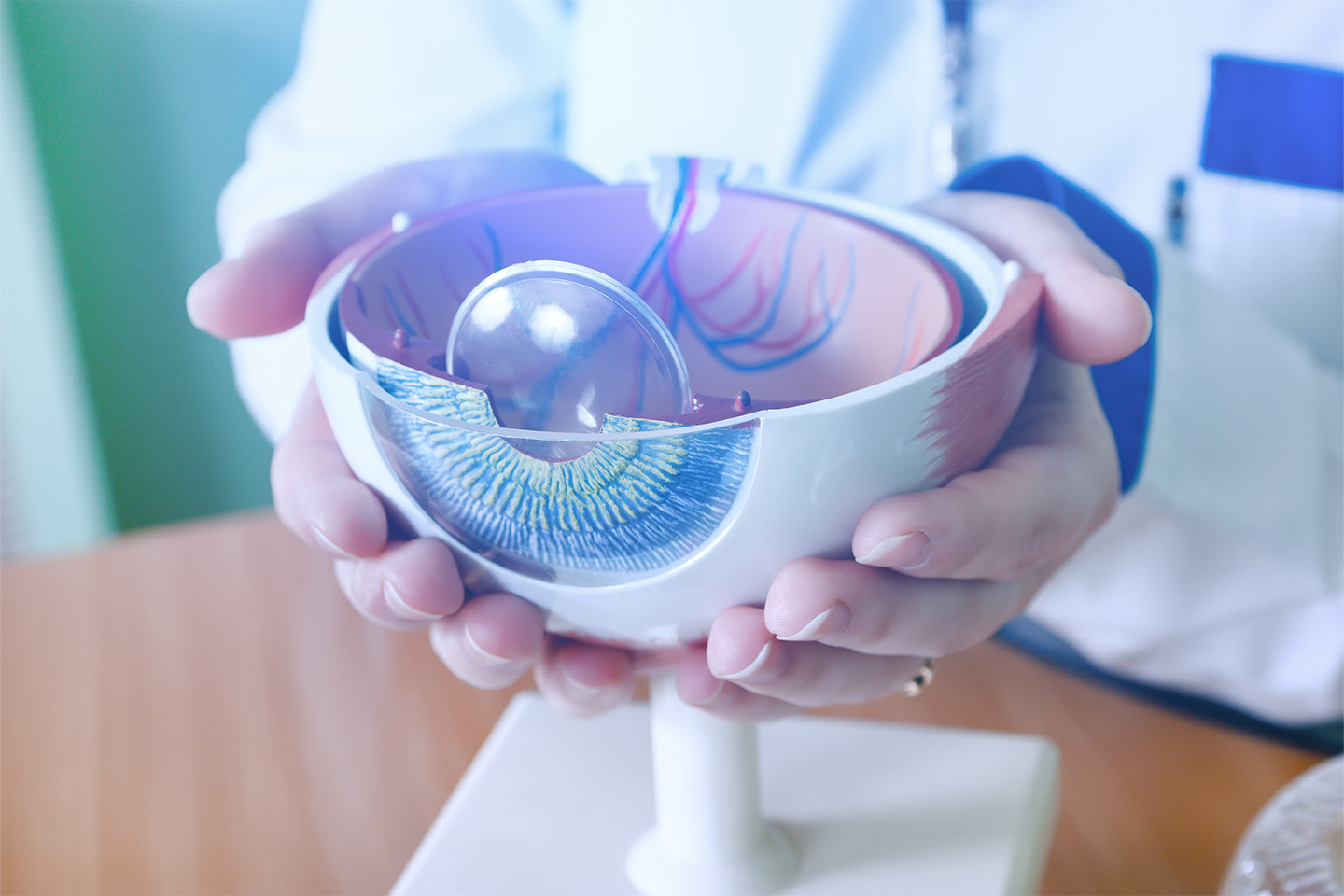Am I a Good Candidate for Photorefractive Keratectomy (PRK)?

For many patients, photorefractive keratectomy is a safe and effective vision correction alternative to LASIK.
Photorefractive keratectomy (PRK) is a procedure used to treat myopia (nearsightedness), hyperopia (farsightedness), and astigmatism. It involves a surgeon using a laser to reshape a patient’s cornea and improve their vision. PRK is similar to its better-known — and, recently, far more common — cousin, LASIK.
The factors that differentiate PRK from LASIK make the former a better option for certain patients. Below, we’ll explore exactly what PRK is, and whether it may be a suitable vision correction option for you.
What Should I Expect from the PRK Procedure?
Your PRK journey will begin with a thorough eye exam that will enable your eye doctor to determine whether PRK is right for you. This exam will include precise measurements of your corneas. If you are deemed to be a good candidate for PRK, you will be asked to refrain from wearing contact lenses for several days prior to your procedure.
PRK surgery takes less than 15 minutes for both eyes, and is an outpatient procedure. Though you will remain awake during PRK, your surgeon will provide you with numbing eye drops and use an eyelid speculum to hold your eyes open for the duration of the surgery.
During PRK, the outermost membrane of the cornea (called the epithelium) is removed using an alcohol solution and/or a physical instrument. Then, an excimer laser calibrated to the patient’s unique eye shape is used to remove and reshape microscopic portions of the cornea.
Afterwards, a clear “bandage lens” will be placed over your eye to facilitate healing. The epithelium typically regrows naturally within a few days.
How Is PRK Different from LASIK?
Except for their initial steps, PRK and LASIK are nearly identical procedures. As mentioned above, during PRK, the epithelium is removed and a laser is used to reshape the surface of the cornea. During LASIK, however, a flap is cut in the surface of the cornea and lifted to expose the layers, or stroma, underneath. The flap is replaced after the operation.
As a result, PRK requires a longer recovery period than LASIK and presents a higher risk for complications (although both procedures are extremely safe and effective). Patients who opt for PRK may experience more pain and discomfort following the procedure, though this can be relieved with over-the-counter pain medication. That said, since PRK doesn’t involve cutting into the cornea, unlike LASIK, the procedure does not present any risk of corneal flap complications.
What PRK Can (and Can’t) Treat
Over 95% of patients who undergo PRK achieve 20/40 vision or better without glasses or contact lenses. Possible side effects of the procedure include glare and corneal hazing. Any issues with poor night vision or excessive glare can be treated with low-prescription glasses with anti-reflective coating.
Presbyopia (age-related farsightedness) is one condition PRK can’t address. This condition affects almost everyone after age 40, and can be treated with reading glasses. However, some patients opt to use PRK or LASIK to create “monovision,” wherein one eye is corrected for short-range vision and the other is corrected for distance vision (the brain naturally learns how to reconcile the two).
Is PRK Right for Me?
Patients who have thin corneas or have previously had LASIK surgery are often ideal candidates for PRK. PRK can also be a better option for patients who maintain active lifestyles, which can exacerbate the risks of corneal flap complications presented by LASIK.
To find out whether you are a good candidate for PRK, contact the eyecare experts at Kleiman Evangelista Eye Centers of Texas today. We have over 35 years of experience as leaders in high-quality eyecare, and can help you craft a vision correction plan tailored to your unique preferences and needs.
Turn To The Top Eye Doctors In Texas
Check out one of our locations below for the best eye care near you:
[DISPLAY_ULTIMATE_SOCIAL_ICONS]








